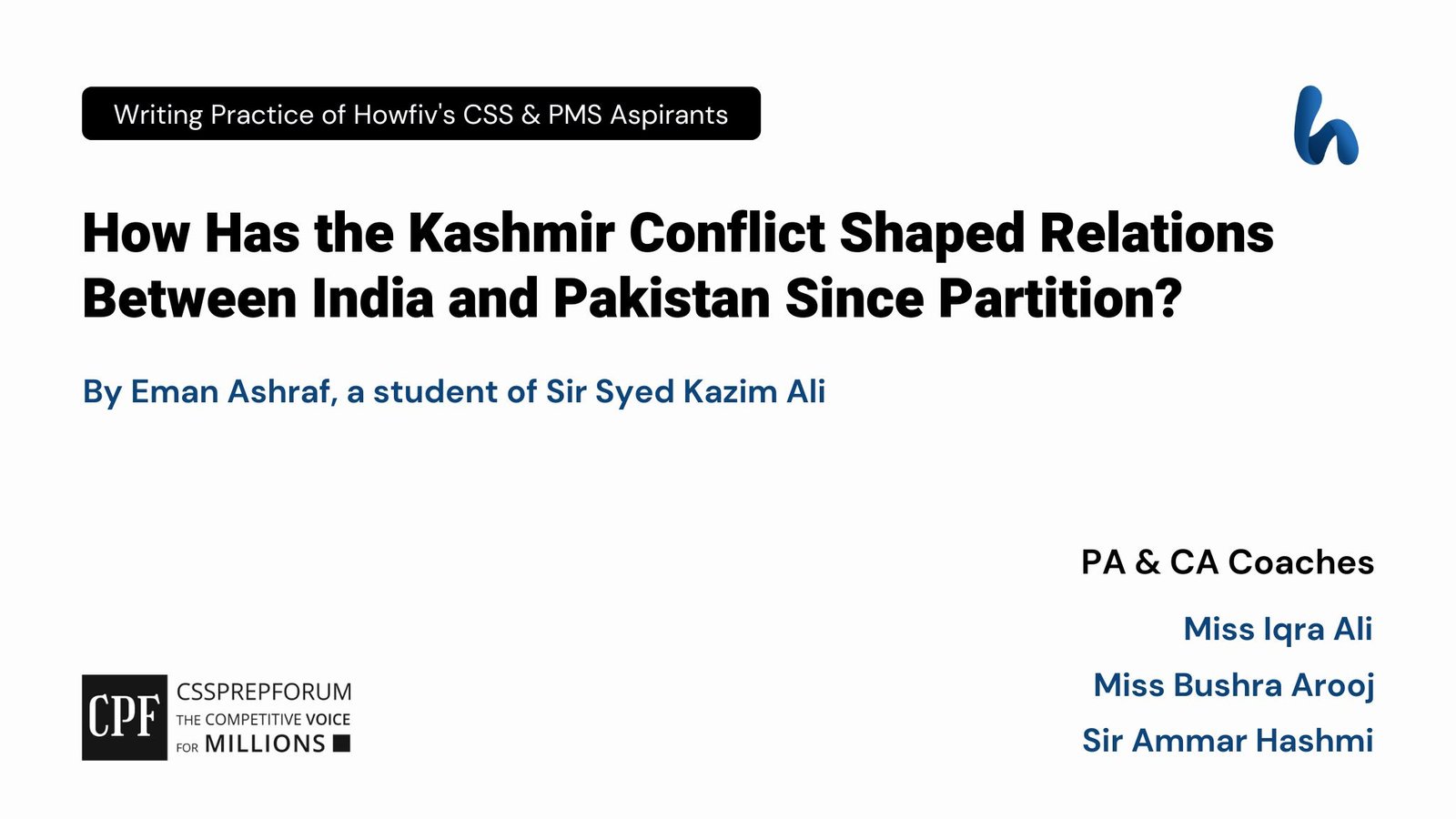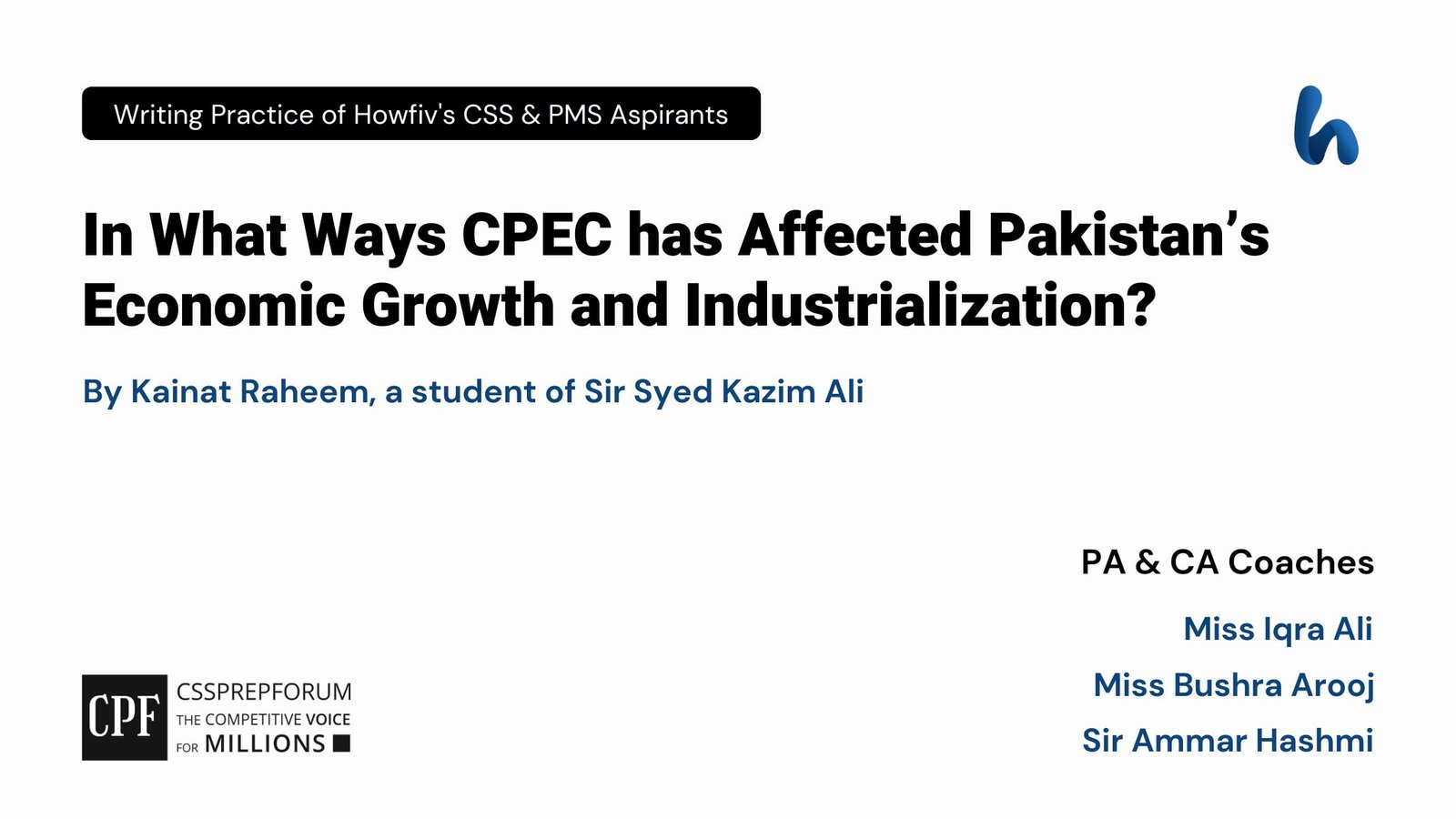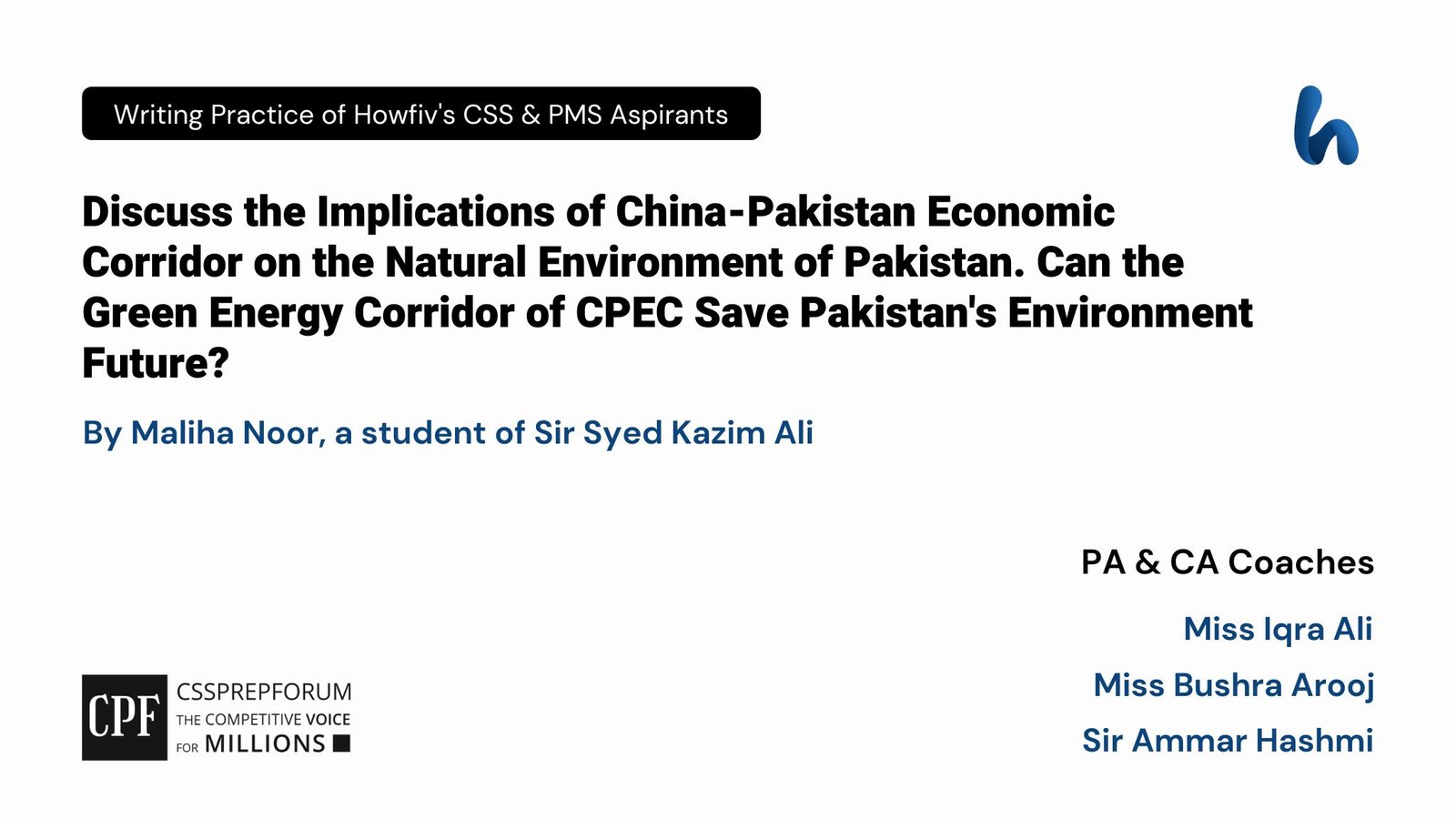CSS Solved Business Administration Past Papers 2020 | What are the Key Elements involved in designing Organizational Structure?
The following question is attempted by Miss Nimra Masood, the top scorer in CSS Business Administration papers. Moreover, the answer is written on the same pattern, taught by Sir to his students, scoring the highest marks in compulsory subjects for years. This solved past paper question is uploaded to help aspirants understand how to crack a topic or question, how to write relevantly, what coherence is, and how to include and connect ideas, opinions, and suggestions to score the maximum.

Topic Breakdown:
Topic: Organizing
Subject: Principles of Management
Organizing is one part of management. Organizational structural and hierarchy are influencers of human resource and decision-making. Thus, the CSS examiner gives considerable importance to this topic.
Introduction:
One of the key decisions to be made an organization efficient is its structure. Organizational structure is critical to determining the way in which the human resource will collaborate and work. While some organizations pursue formal structure with centralized control; other organizations desire an informal structure with decentralized control and quicker communication. There are several key elements that are involved in designing organizational structure. Some of them are: Specialization, Span of Control, Formalization and Centralization to name the few. Every element involved in designing organizational structure is integral to operations. Therefore each factor should be examined and illustrated in detail.
Understanding Organizing:
Arranging people and resources in such a way that they work together to achieve organizational goals.
Organizational Structure:
System for accomplishing and connecting the tasks that form part of the Organizations objectives
Key Elements in Designing an Organizational Structure:

1) Work Specialization:
Work specialization is dividing each task into separate activities. For example, in a cloth factory, there are some people assigned to designing, some to cutting and some to sewing. The outcome is a complete dress to be sold to customers, but the process is that of work specialization. Workers are only required to perform certain tasks in a highly specialized organization. The degree of specialization is one aspect of organizational structure. More the degree of specialization, the more formal the structure the organization will have. Fast food chain like Macdonald’s has a high degree of specialization due to its work nature. While retail outlets Al-Fatah have a low degree of specialization.
2) Departmentalization:
The second key element in designing organizational structure is the type of departmentalization. There are many different forms of departmentalization; organizations need to decide which one will give them the desired level of efficiency. Departmentalization is the way in which jobs are put together and coordinated to accomplish tasks.
- Process Departmentalization:
The grouping is done on the basis of the steps involved in making a product. The completion of the product involves many phases, and each one is grouped into a department. For example, in the Garments factory are different process departments like Threading, Dying, Weaving, Cutting and Stitching.
- Functional Departmentalization:
The grouping is done according to the functions being performed. Departments involved in such type are Finance, Marketing Customer Relationship, Human Resource etc. Most of the Telecom Industry, like Mobilink, Ufone and Nayatel, Use this form of Departmentalization.
- Geographic Departmentalization:
This type of departmentalization is done mostly by multinationals and large organizations that have spread operations to far-flung areas. Pakistan’s banking sector is one prominent example of such compartmentalization, where branches are grouped into different regions such as north, central and south.
- Customer Departmentalization:
Another form of Departmentalization is grouping according to customer needs and wants. In Pakistan, clothing brands mostly adopt this strategy by departmentalizing according to men’s, women’s and children’s wear. Also, the separation of stitched and unstitched sections is the type of customer departmentalization.
3) Chain of Command:
The third key factor in formulating the organizational structure is the Chain of Command. The more detailed this is more formalized the organizational structure will be. The lesser the command structure more informal the organizational structure. The chain of command revolves around the authority and responsibility delegated to its personnel.
- Authority:
This is the right inherent in managerial positions. The more the authority is confined to the top management more it is a formal structure. The two types of authority are line and staff authority
- (I) Line Authority:
Where the manager is entitled to direct the work of his employees. - (II) Staff Authority:
At the lower level of management allowing only to assist and advice other employees.
- Unity of Command:
It is the concept that employees should report only to one manager. Most of the formal organizational structures follow this concept.
4) Span of Control:
The fourth key element in Formulating Organizational design is the span of control. This is the number of employees reporting to a single manager or the employees that a manager can effectively and efficiently manage. The narrower the span of control the more formal the organizational structure is. It means that there is a long chain of command with authority delegated only to a few people. However, today’s general perspective is that a wider span of control is more efficient as it reduces time and involves more people in decision-making.
5) Centralization or Decentralization:
Another factor in determining the organizational structure is the degree of centralization. This factor determines the amount of input from the lower-level management in decision-making. The more centralized the organization, the more formal structure it will have.
- Centralization:
The authority of decision-making is concentrated only to top-level management. Such policy is mostly followed by large organizations having a stable environment. Top management either does not trust the subordinates or lacks the experience to become part of the decision-making process.
- Decentralization:
The authority of decision-making is devolved to the lower management. This devolution is a character of informal organizational structure, especially for geographically dispersed companies. It is most effective in critical decision-making in a complex environment.
6) Formalization:
The last factor that contributes to the organizational structure is formalization. It is the degree to which jobs are standardized. In a highly formalized organization there are clearly defined job description, numerous organizational rules and explicit procedures. Most of the formal organizational structures are high on formalization while informal organizations are usually low on it.
Mechanistic Organizational Structure:
The entire six elements combine to elucidate the form of organizational structure. This structure is very close to the bureaucratic structure with strong chain of command, formal hierarchy and narrow span of control. Highly specialized workers are a character of such organizations
Organic Organizational Structure:
While the mechanistic structure is rigid and stable, the organic structure is loose and dynamic. It exercises a wide span of control, with the loose division of labour and weak chain of command. Such organizations are more open to change and their employees are well-trained to handle diverse problems.
Conclusion:
Organizing is crucial to the operations of the company. There are two main types of organizational Structures: Formal and Informal. Six key elements: Worker Specialization, departmentalization, span of control, chain of command, formalization and degree of centralization all combine to determine the structure of any organization. Most organizations today follow the informal structure as globalization is making it impossible to hold control in few hands. Mechanistic and organic structures are the two outcomes of combining and elaborating the key elements of organizational structure.

CSS Solved Past Papers’ Essays
Looking for the last ten years of CSS and PMS Solved Essays and want to know how Sir Kazim’s students write and score the highest marks in the essays’ papers? Then, click on the CSS Solved Essays to start reading them.
CSS Solved Essays

CSS Solved General Science & Ability Past Papers
Want to read the last ten years’ General Science & Ability Solved Past Papers to learn how to attempt them and to score high? Let’s click on the link below to read them all freely. All past papers have been solved by Miss Iqra Ali & Dr Nishat Baloch, Pakistan’s top CSS GSA coach having the highest score of their students.
General Science & Ability Solved Past Papers
CSS Solved Pakistan Affairs Past Papers
Want to read CSS Pakistan Affairs Solved Past Papers and learn how to attempt them to score high? Let’s click on the link below to read them all freely. All past papers’ questions have been attempted by Sir Kazim’s students, who scored the highest in the subject.
CSS Solved Pakistan Affairs
CSS Solved International Relations’ Past Papers
Have you opted for International Relations in the CSS examination and want to score above 150? Then, click on the CSS Solved International Relations’ Past Papers by Miss Abeera Fatima, the top IR scorer and the best IR coach in Pakistan.
CSS Solved International Relations Past Papers
Articles Might Interest You!
The following are some of the most important articles for CSS and PMS aspirants. Click on any to start reading.












